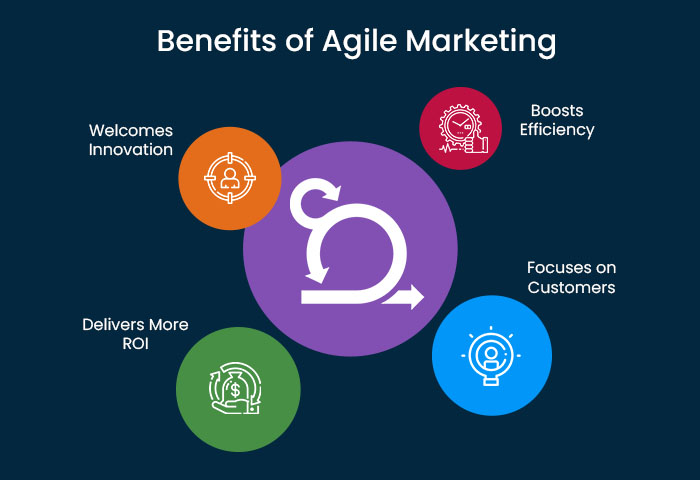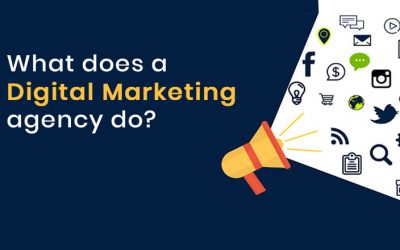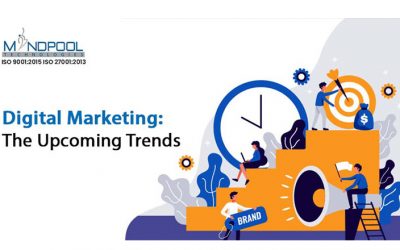
As audience expectations rise, marketing technology gets more sophisticated, and the number of channels we need to reach keeps growing, marketers are discovering that their tried and true ways of working just don’t cut it anymore. Fortunately, Agile marketing holds the key to making marketing work in this volatile climate. But what is Agile marketing? Is it just marketing without a plan?
Here, we’ll discuss every aspect of agile marketing in detail. Let’s get started.
What is Agile Marketing?
It’s a project management framework that borrows the principles of agile software development (which enables teams to hit ship dates under budget more consistently) and applies it to a marketing context. It achieves this by streamlining team structure, communication, processes, and workflows to maximize efficiency without sacrificing quality.
This results in doing better work more quickly with fewer missed deadlines. It also allows teams to respond to changes in the market and adjust tactics according to what works much more rapidly than the typical annual “big campaign” advertising model.
Benefits of Agile Marketing

Boosts Efficiency
Eliminating unnecessary steps and red tape means teams work faster. This equal executing more projects, which means more opportunity to bring in customers. Instead of spending time on things that don’t deliver value, you can focus all your efforts on the most important tasks at hand.
Focuses on Customers
This approach to marketing keeps teams focused on delivering what customers and audiences want without getting bogged down in unnecessary documentation and meetings.
Delivers More ROI
The old way of doing marketing was often slow, and measurement was sometimes difficult to quantify. Now, thanks to agile processes that empower teams to run multiple campaigns at once without reducing effectiveness, plus the advantages of modern analytics, it’s easier than ever to produce more measurable return on investment at (potentially) less cost.
Welcomes Innovation
By emphasizing rapid testing, marketing teams using agile can discover all kinds of insights much more quickly. That means your marketing efforts can be driven by actual data to provide customers the messaging they’re looking for, rather than making guesses.
How to Get Started with Agile Marketing
1. Build Your Agile Team Structure
This first step, creating an agile team structure, is arguably the most challenging. Agile marketing requires a flat, integrated team. As such, any existing ‘siloes’ within the team may need to be broken down. For example, if you have departments such as SEO or social media which operate independently and with a strict chain of command, the people in those departments will need to adapt to working on a level playing field with each other and other departments.
2. Select Your Agile Platform
Once your team members have agreed to their new agile team structure, you can start implementing the platform and processes that will power your agile marketing.
Agile marketing is almost always supported with a project management platform. This provides the basis for assigning tasks to team members, documenting progress towards goals, and collaboration on tasks. The platform should enable all three stages of the agile marketing cycle: build, measure, learn.
3. Set Up Your Agile Processes
Most agile marketing teams also use software that helps with the data-intensive measure and learn phases of the agile cycle. Widely used examples include media monitoring tools that help identify PR opportunities in real time, and SEO tools that monitor website search performance. Each team should choose a mix of tools to suit its unique strategy, which may evolve quickly through the agile methodology.
The marketing team’s leadership will also have some decisions to make on the exact agile marketing setup they will use. Will the team use the popular scrum setup for agile working? How will progress be reported to senior stakeholders? How will team members be incentivized to fully adopt the agile way of working? The answers to questions like these may change over time, but it’s advisable to address these points as well as possible from the first day.
4. Implement Agile Marketing
Onboarding team members and clients onto your new agile marketing setup represents a bright new start for the team. Conveying the excitement and opportunity of the moment is crucial to securing everyone’s buy-in at this vital early stage.
Agile marketing teams often engage a project manager to lead the onboarding process, and subsequently to oversee the team’s use of the agile methodology. Responsibilities taken on by this person typically include training team members in the use of the project management platform, leading agile meetings, and adapting agile processes according to the specific requirements of the team.
The project should also consider developing a tailored agile marketing manifesto for the team. This document should combine the principles of agile working with the identity and objectives of the organization, resulting in a message that tells team members how agile marketing will help the team achieve its aims.
Read more: Why B2B Marketers Must Focus on the Buyer’s Journey
Final Words:
If you’re ready to take steps toward improving the way your team manages marketing projects and workflows, it’s time to do some reading, and then get down to work.
As a professional digital marketing services provider, Mindpool delivers cost-effective and results-driven online marketing solutions. Mindpool offers end-to-end digital marketing solutions to help your business thrive online.
















